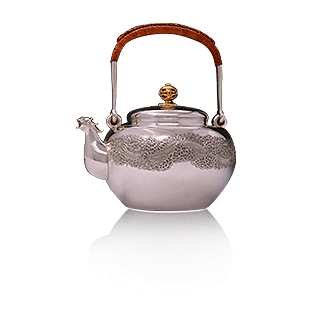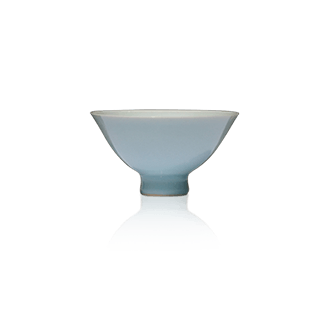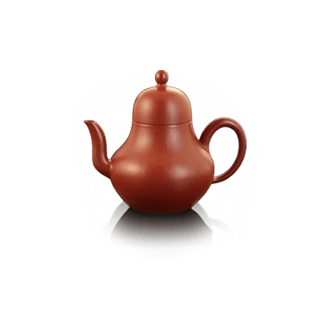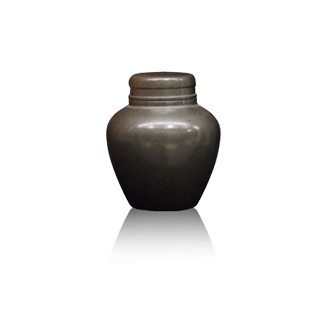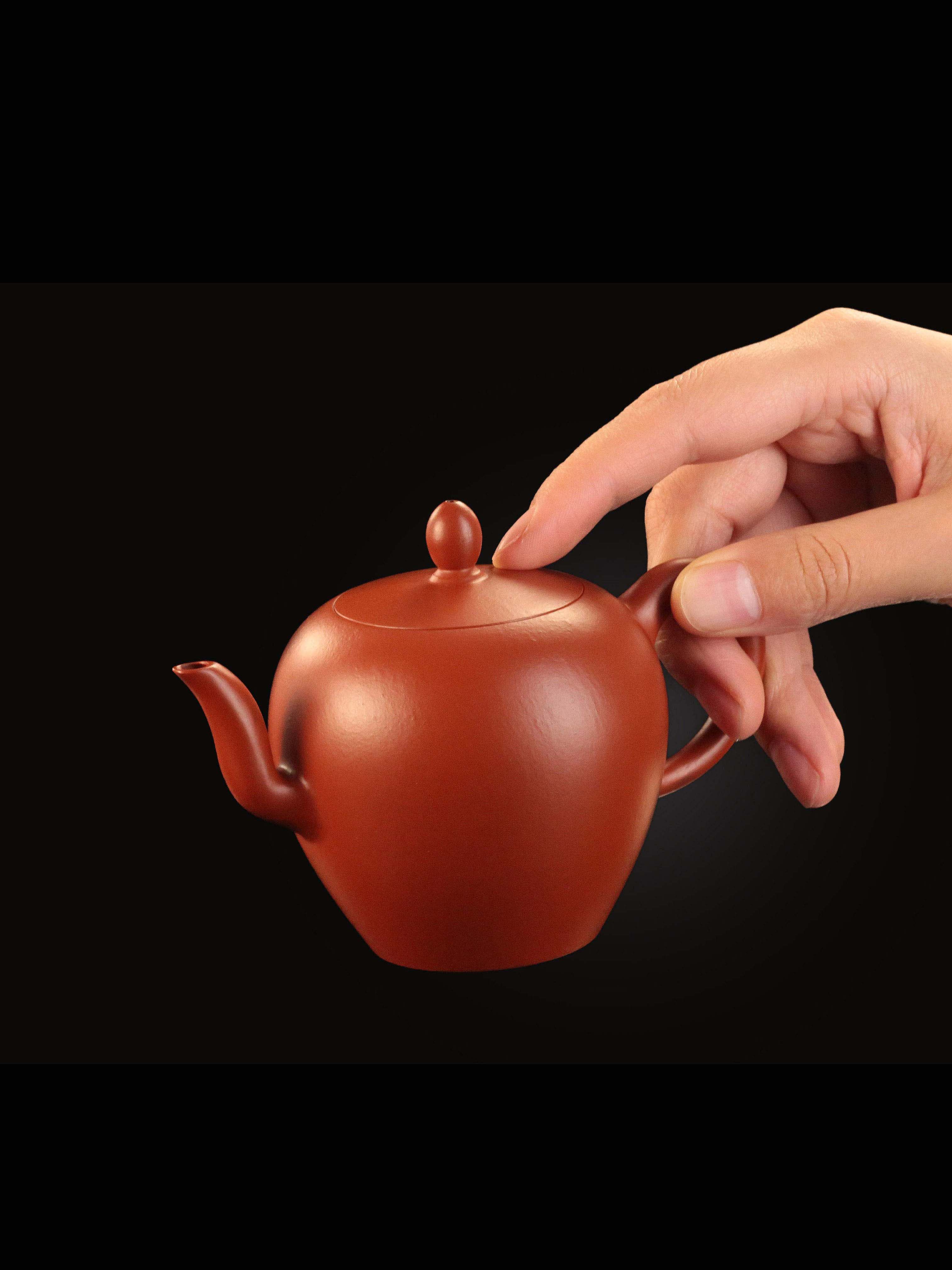


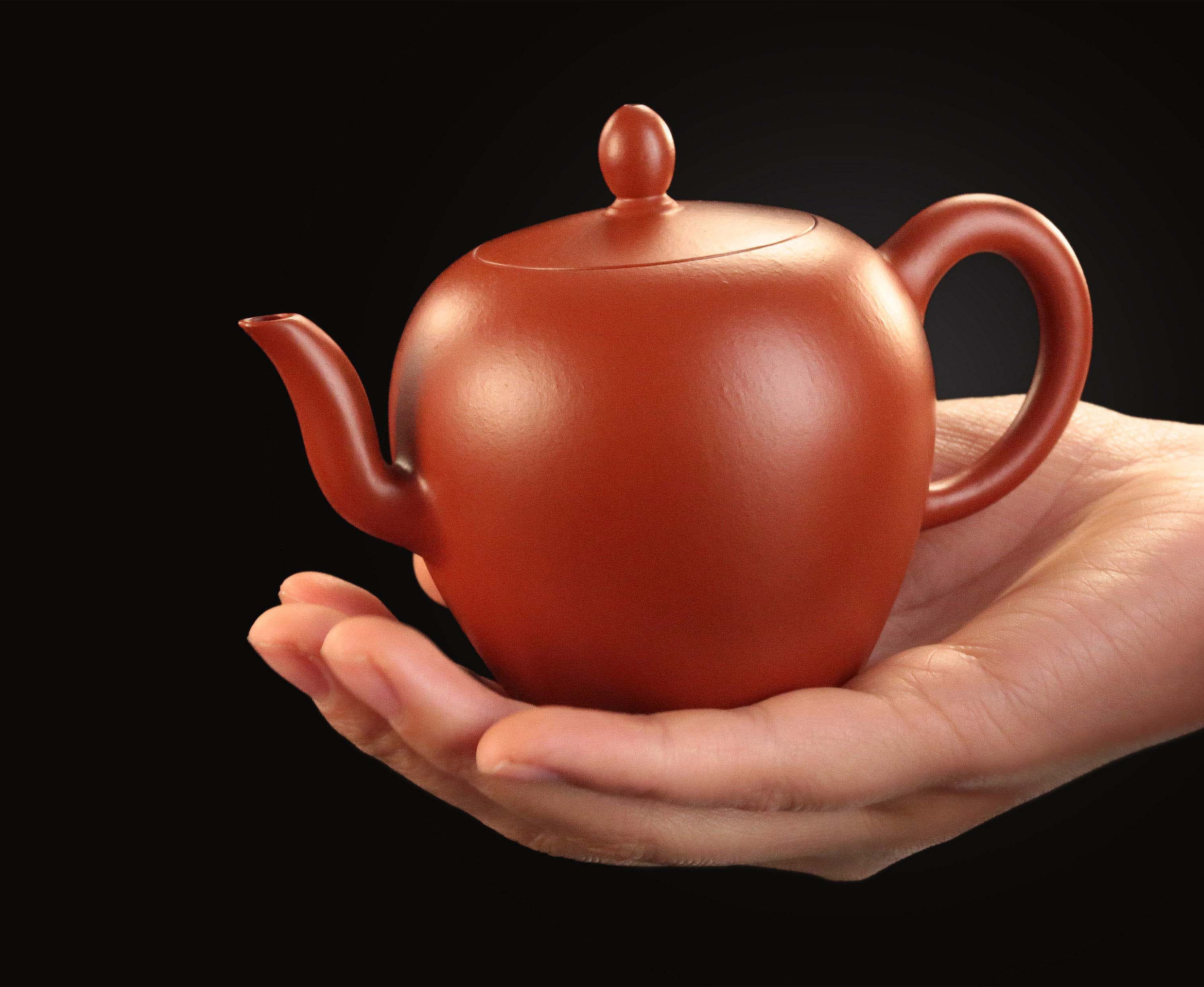
Beauty Shoulder Teapot - Huanglongshan Zhu Ni (Red Clay)






Beauty Shoulder Teapot - Huanglongshan Zhu Ni (Red Clay)
Beauty Shoulder Teapot - Huanglongshan Zhu Ni (Red Clay)
Beauty Shoulder Teapot - Huanglongshan Zhu Ni (Red Clay)
Vessel Type: Beauty Shoulder Teapot - Huanglongshan Zhuni (Red Clay)
Artist: dayatang
Material: Zhu Ni
Specifications : Length : 13cm Rim Diameter : 5cm Height : 9cm (Overall height) Capacity : 225ml
The Huanglongshan Zhuni Beauty Shoulder Zisha Teapot is renowned for its rare clay, graceful shape, and elegant charm, fusing the natural endowments of Zisha art with humanistic appeal. The following analysis will explore its qualities from four perspectives: clay characteristics, aesthetic form, craftsmanship, and cultural metaphors.
Huanglongshan Zhuni
- Scarcity of the mineral vein <br />Huanglongshan Zhuni belongs to the "stone-bone mud" layer. The raw material is golden yellow, and after firing, it resembles cinnabar, bright but not gaudy. The clay properties are between purple clay and red clay, possessing both the strength of purple clay and the warmth of red clay. Due to the thin mineral layer and many impurities, only a few mines can yield high-quality raw ore, with a finished product rate of less than 30%. Hence the saying, "An ounce of Zhuni is worth an ounce of gold."
- Color and Texture <br />After being kiln-fired at 1180℃, the clay color gradually changes from orange-red to deep jujube red, and the surface shows subtle wrinkles (commonly known as "earthworm patterns"), as natural and lively as silk folds. The double-pore structure gives it excellent breathability, and after long-term use and patina development, it develops an amber luster. When soaked in tea, it shows even more vitality, as if the clay color is "breathing".
Aesthetics of Form
- The Curve Code <br />The body of the teapot is inspired by the slender shoulders of Han and Tang dynasty maidens, extending in an S-shaped parabola from the neck to the bottom. The shoulder curve resembles a crescent moon emerging from the clouds, while the waist tapers inward like a beautiful woman with a bound waist, with the overall proportions following the "golden ratio." The dome of the lid seamlessly connects with the curve of the shoulder, like a cloud-like hairpin, highlighting the classical aesthetic of "shoulders as if sculpted, waist as slender as a silken ribbon."
- Component Imagery
- Three-bend Stream : Resembling a lady's delicate hand plucking a flower, its exit from the water is both swift and graceful, yet subtly elegant.
- Ear-shaped handle : inspired by the flowing ribbons of flying apsaras in Dunhuang, its curve fits snugly against the palm and the space between the thumb and forefinger.
- Round bead knob : Resembling a kingfisher feather hairpin, creating a contrast between solid and void with the body of the teapot.
Craftsmanship
- Shaping Challenges <br />Zhu Ni clay has a shrinkage rate as high as 20%-25%, and its thin-walled, large-curved shape, resembling a beautiful woman's shoulder, is extremely prone to cracking during drying and firing. Craftsmen must use the "hollow-out" technique (a specially made curved support) to support the wet clay, finely adjusting the tension of the clay daily during the air-drying stage to ensure the curved surface transitions without collapse. The "heaven-and-earth" fit between the spout and the lid rim must be precise to within 0.3 millimeters.
- Decorative Philosophy : The entire body is plain and unadorned, using the natural color of the clay as decoration. Only at the turning points of the shoulder is a "hidden joint" technique applied, with the ribs barely visible, like the subtle patterns on a silk robe. This minimalist aesthetic of "less is more" perfectly aligns with the literati teapot standard of Wen Zhenheng's "Treatise on Superfluous Things" from the Ming Dynasty, which states that "teapot making should be elegant and antique, and the most taboo thing is carving."
artistic conception
- Feminist Symbols <br />Breaking away from the traditional male perspective of "using vessels to symbolize virtues" in Zisha ware, this work reconstructs female subjectivity through graceful shapes. The upright shoulders of the pot metaphorically represent the resilience of women, which is both gentle and strong, while the echo between the spout and the handle symbolizes the vitality of "strength within grace," making it an innovative work in the gender narrative of modern Zisha ware.
- The Zen-inspired tea ceremony : The curved surface of the teapot subtly embodies the cosmological concept of "round heaven and square earth." The dome-shaped lid symbolizes the heavens, while the rounded body carries the virtues of the universe. The three-bend spout evokes the elegance of "winding stream party." When water is poured, the waterline swirls down the shoulder of the teapot, like a waterfall cascading down a green cliff, perfectly embodying the Zen-inspired aesthetic of "one vessel, one world."
This teapot can be described as "an art of clay and fire, an epic of strength and beauty." From the selection and aging of ore to the color setting in the kiln, every step is a dialogue with impermanence; from the pushing of curves to the control of the spirit, every detail reveals the craftsman's cultivation of "investigating things to gain knowledge." It is not only a vessel for tea ceremonies, but also a three-dimensional poem that embodies the aesthetics of Eastern women, the wisdom of traditional craftsmanship, and the spirit of contemporary humanism. Between the fiery passion of the red clay and the gentle grace of the shape, it sings of the millennia-old flame of Zisha pottery.
The origin of the "Beauty's Shoulder" Zisha teapot:
The "Beauty's Shoulder" teapot, also known as the "Round Bead Teapot," is described in the "Ode to Yixing Teapots": "A round bead in the palm, like a pearl from Hepu; filled with fragrant tea, it is like soft jade, warm and fragrant, no less than a pearl in the palm, pleasing to the eye and heart." Its full, rounded body and smooth, elegant lines evoke the charm of a beautiful woman from the Tang Dynasty. Only by investing emotion and effort can a teapot maker create a masterpiece that is both sensual and fragrant, a perfect harmony of body and soul.
The "beauty's shoulder" style is characterized by its slender and rounded shape. The entire piece resembles a Tang Dynasty beauty with slender shoulders. Only a master craftsman with a deep understanding of the subject could create such a masterpiece that blends spirit and charm! The entire teapot is oval in shape with a slender body. The lid, like a hat, covers the mouth of the teapot, and the oval-shaped knob stands upside down on the lid. The spout is flexible and gentle, and the ear-shaped handle is wide at the top and narrow at the bottom, making it unique and interesting.
The shape of the "Beauty Shoulder" Zisha teapot is inspired by the porcelain "Meiping" vase. The "Meiping," originally called the "Chicken Leg Vase," was created by nomadic peoples of the north. Its body is angular, resembling a chicken leg, wider at the top and narrower at the bottom, with a slightly protruding upper part, making it easy to carry in a leather case on horseback. After being introduced to the Central Plains, it gradually evolved, and by the Song Dynasty, it was known as the "Jingping" (Scripture Vase).
After becoming emperors, Song Dynasty emperors were required to undergo further education. After class, they had to entertain their teachers with meals and drinks, and the wine was served in these bottles. After the Qing Dynasty abolished the "Jingyan" system, these bottles were used for flower arranging. The small diameter was suitable for arranging slender plum blossoms, hence the name "Meiping" (plum blossom vase).
Vessel Type: Beauty Shoulder Teapot - Huanglongshan Zhuni (Red Clay)
Artist: dayatang
Material: Zhu Ni
Specifications : Length : 13cm Rim Diameter : 5cm Height : 9cm (Overall height) Capacity : 225ml
The Huanglongshan Zhuni Beauty Shoulder Zisha Teapot is renowned for its rare clay, graceful shape, and elegant charm, fusing the natural endowments of Zisha art with humanistic appeal. The following analysis will explore its qualities from four perspectives: clay characteristics, aesthetic form, craftsmanship, and cultural metaphors.
Huanglongshan Zhuni
- Scarcity of the mineral vein <br />Huanglongshan Zhuni belongs to the "stone-bone mud" layer. The raw material is golden yellow, and after firing, it resembles cinnabar, bright but not gaudy. The clay properties are between purple clay and red clay, possessing both the strength of purple clay and the warmth of red clay. Due to the thin mineral layer and many impurities, only a few mines can yield high-quality raw ore, with a finished product rate of less than 30%. Hence the saying, "An ounce of Zhuni is worth an ounce of gold."
- Color and Texture <br />After being kiln-fired at 1180℃, the clay color gradually changes from orange-red to deep jujube red, and the surface shows subtle wrinkles (commonly known as "earthworm patterns"), as natural and lively as silk folds. The double-pore structure gives it excellent breathability, and after long-term use and patina development, it develops an amber luster. When soaked in tea, it shows even more vitality, as if the clay color is "breathing".
Aesthetics of Form
- The Curve Code <br />The body of the teapot is inspired by the slender shoulders of Han and Tang dynasty maidens, extending in an S-shaped parabola from the neck to the bottom. The shoulder curve resembles a crescent moon emerging from the clouds, while the waist tapers inward like a beautiful woman with a bound waist, with the overall proportions following the "golden ratio." The dome of the lid seamlessly connects with the curve of the shoulder, like a cloud-like hairpin, highlighting the classical aesthetic of "shoulders as if sculpted, waist as slender as a silken ribbon."
- Component Imagery
- Three-bend Stream : Resembling a lady's delicate hand plucking a flower, its exit from the water is both swift and graceful, yet subtly elegant.
- Ear-shaped handle : inspired by the flowing ribbons of flying apsaras in Dunhuang, its curve fits snugly against the palm and the space between the thumb and forefinger.
- Round bead knob : Resembling a kingfisher feather hairpin, creating a contrast between solid and void with the body of the teapot.
Craftsmanship
- Shaping Challenges <br />Zhu Ni clay has a shrinkage rate as high as 20%-25%, and its thin-walled, large-curved shape, resembling a beautiful woman's shoulder, is extremely prone to cracking during drying and firing. Craftsmen must use the "hollow-out" technique (a specially made curved support) to support the wet clay, finely adjusting the tension of the clay daily during the air-drying stage to ensure the curved surface transitions without collapse. The "heaven-and-earth" fit between the spout and the lid rim must be precise to within 0.3 millimeters.
- Decorative Philosophy : The entire body is plain and unadorned, using the natural color of the clay as decoration. Only at the turning points of the shoulder is a "hidden joint" technique applied, with the ribs barely visible, like the subtle patterns on a silk robe. This minimalist aesthetic of "less is more" perfectly aligns with the literati teapot standard of Wen Zhenheng's "Treatise on Superfluous Things" from the Ming Dynasty, which states that "teapot making should be elegant and antique, and the most taboo thing is carving."
artistic conception
- Feminist Symbols <br />Breaking away from the traditional male perspective of "using vessels to symbolize virtues" in Zisha ware, this work reconstructs female subjectivity through graceful shapes. The upright shoulders of the pot metaphorically represent the resilience of women, which is both gentle and strong, while the echo between the spout and the handle symbolizes the vitality of "strength within grace," making it an innovative work in the gender narrative of modern Zisha ware.
- The Zen-inspired tea ceremony : The curved surface of the teapot subtly embodies the cosmological concept of "round heaven and square earth." The dome-shaped lid symbolizes the heavens, while the rounded body carries the virtues of the universe. The three-bend spout evokes the elegance of "winding stream party." When water is poured, the waterline swirls down the shoulder of the teapot, like a waterfall cascading down a green cliff, perfectly embodying the Zen-inspired aesthetic of "one vessel, one world."
This teapot can be described as "an art of clay and fire, an epic of strength and beauty." From the selection and aging of ore to the color setting in the kiln, every step is a dialogue with impermanence; from the pushing of curves to the control of the spirit, every detail reveals the craftsman's cultivation of "investigating things to gain knowledge." It is not only a vessel for tea ceremonies, but also a three-dimensional poem that embodies the aesthetics of Eastern women, the wisdom of traditional craftsmanship, and the spirit of contemporary humanism. Between the fiery passion of the red clay and the gentle grace of the shape, it sings of the millennia-old flame of Zisha pottery.
The origin of the "Beauty's Shoulder" Zisha teapot:
The "Beauty's Shoulder" teapot, also known as the "Round Bead Teapot," is described in the "Ode to Yixing Teapots": "A round bead in the palm, like a pearl from Hepu; filled with fragrant tea, it is like soft jade, warm and fragrant, no less than a pearl in the palm, pleasing to the eye and heart." Its full, rounded body and smooth, elegant lines evoke the charm of a beautiful woman from the Tang Dynasty. Only by investing emotion and effort can a teapot maker create a masterpiece that is both sensual and fragrant, a perfect harmony of body and soul.
The "beauty's shoulder" style is characterized by its slender and rounded shape. The entire piece resembles a Tang Dynasty beauty with slender shoulders. Only a master craftsman with a deep understanding of the subject could create such a masterpiece that blends spirit and charm! The entire teapot is oval in shape with a slender body. The lid, like a hat, covers the mouth of the teapot, and the oval-shaped knob stands upside down on the lid. The spout is flexible and gentle, and the ear-shaped handle is wide at the top and narrow at the bottom, making it unique and interesting.
The shape of the "Beauty Shoulder" Zisha teapot is inspired by the porcelain "Meiping" vase. The "Meiping," originally called the "Chicken Leg Vase," was created by nomadic peoples of the north. Its body is angular, resembling a chicken leg, wider at the top and narrower at the bottom, with a slightly protruding upper part, making it easy to carry in a leather case on horseback. After being introduced to the Central Plains, it gradually evolved, and by the Song Dynasty, it was known as the "Jingping" (Scripture Vase).
After becoming emperors, Song Dynasty emperors were required to undergo further education. After class, they had to entertain their teachers with meals and drinks, and the wine was served in these bottles. After the Qing Dynasty abolished the "Jingyan" system, these bottles were used for flower arranging. The small diameter was suitable for arranging slender plum blossoms, hence the name "Meiping" (plum blossom vase).




Frequently asked questions
Use the FAQ section to answer your customers' most frequent questions.
Order
Yes, we ship all over the world. Shipping costs will apply, and will be added at checkout. We run discounts and promotions all year, so stay tuned for exclusive deals.
It depends on where you are. Orders processed here will take 5-7 business days to arrive. Overseas deliveries can take anywhere from 7-16 days. Delivery details will be provided in your confirmation email.
You can contact us through our contact page! We will be happy to assist you.





